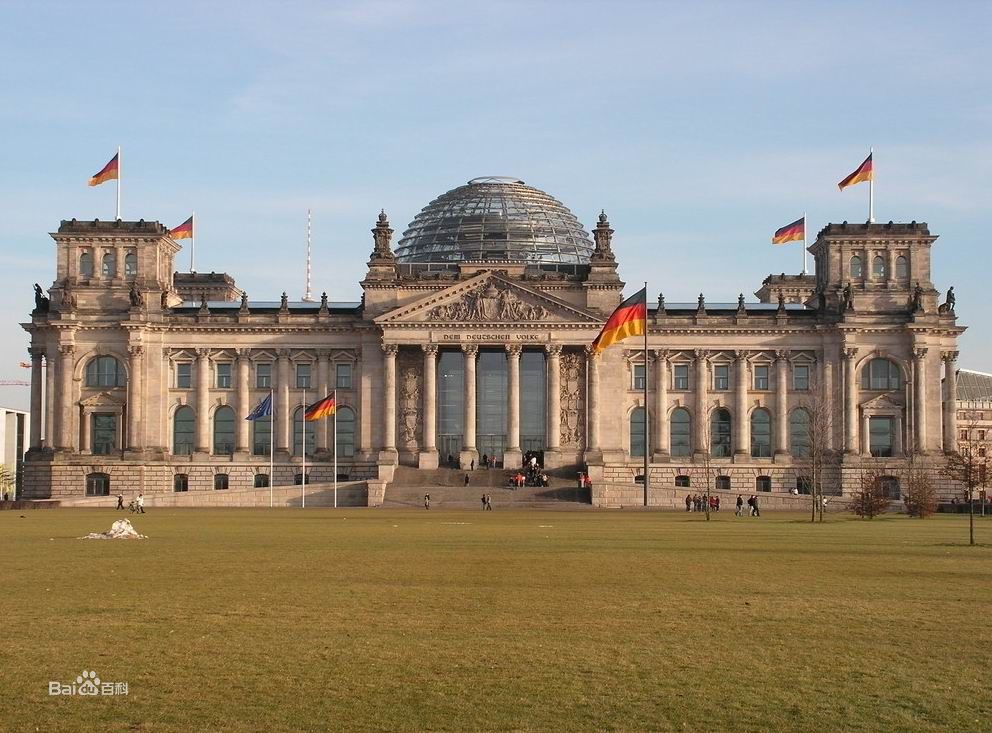 Location: Central Europe, bordering the Baltic Sea and the North Sea, between the Netherlands and Poland, south of Denmark
Location: Central Europe, bordering the Baltic Sea and the North Sea, between the Netherlands and Poland, south of Denmark
Population: 80,800,000 (2013 est.)
Land Area: 357,021 km2
Capital: Berlin
Main cities: Hamburg, Munich, Cologne, Frankfurt, Essen, Dortmund, Stuttgart, Bremen, Hanover, Duisburg
Languages: German
GDP: $3.635 trillion (2013 est.)
Monetary unit: Euro (formerly Deutsche mark)
Exports: $1.239 trillion f.o.b. (2014 est.)
Exports - commodities: machinery, vehicles, chemicals, metals and manufactures, foodstuffs, textiles
Exports - partners: France 9.7%, US 8.6%, UK 7.3%, Italy 6.7%, Netherlands 6.2%, Belgium 5.5%, Austria 5.5%, Spain 4.7% (2006)
Imports: $1.002 trillion f.o.b. (2014 est.)
Imports - commodities: machinery, vehicles, chemicals, foodstuffs, textiles, metals
Imports - partners: Netherlands 11.7%, France 8.7%, Belgium 7.6%, UK 5.9%, China 5.9%, Italy 5.5%, US 5.1%, Austria 4.3%, Russia 4% (2006)
Land use:
arable land: 33.13%
permanent crops: 0.6%
other: 66.27% (2005)
Natural resources: coal, lignite, natural gas, iron ore, copper, nickel, uranium, potash, salt, construction materials, timber, arable land
Economy Overview
The German economy - the fifth largest economy in the world in PPP terms and Europe's largest - began to contract in the second quarter of 2008 as the strong euro, high oil prices, tighter credit markets, and slowing growth abroad to ok their toll on Germany's export-dependent economy. At 1.7% in 2008, GDP growth is expected to be negative in 2009. Recent stimulus and lender relief efforts will make demands on Germany's federal budget and undercut plans to balance its budget by 2011. This suggested the reforms launched by the former government of Chancellor Gerhard, deemed necessary due to chronically high unemployment and low average growth, had had the desired effect. The current government of Chancellor Angela Merkel has initiated other reform measures, such as a gradual increase in the mandatory retirement age from 65 to 67 and measures to increase female participation in the labor market. The modernization and integration of the eastern German economy - where unemployment exceeds 30% in some municipalities - continues to be a costly long-term process, however, with annual transfers from west to east amounting to roughly $80 billion. While corporate restructuring and growing capital markets have set strong foundations to help Germany meet the longer-term challenges of European economic integration and globalization, Germany's export-oriented economy has proved a disadvantage in the context of weak global demand.
 Location: Central Europe, bordering the Baltic Sea and the North Sea, between the Netherlands and Poland, south of Denmark
Location: Central Europe, bordering the Baltic Sea and the North Sea, between the Netherlands and Poland, south of Denmark

